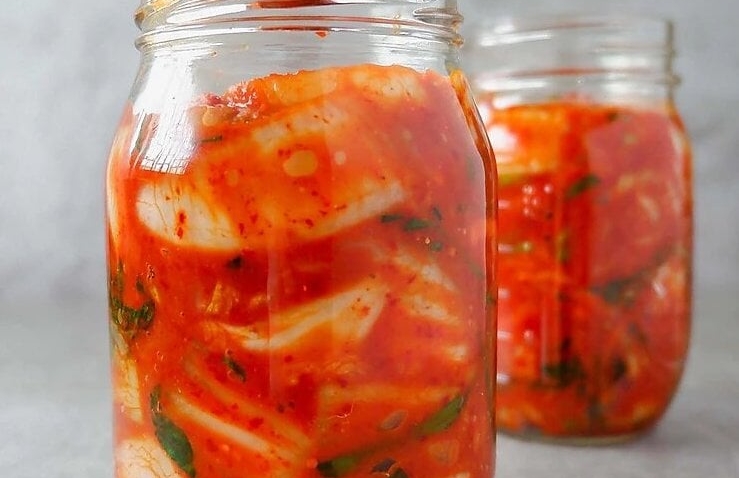
Easy Vegan Kimchi
| Prep time: | 15 minutes |
| Cook time: | 5 minutes |
| Total time: | 20 minutes + fermenting |
| Servings: | 2 pints |
| Cuisine: | Asian, Korean |
This Easy Vegan Kimchi is packed full of flavor and also of course, good gut bacteria from the fermentation process. It’s my favorite Korean side dish along with some beansprout salad! This easy vegan kimchi is inspired by mat kimchi, that’s usually made by pre-cutting the cabbage first before turning it into kimchi to ferment. Mat kimchi can also be eaten fresh.
Ingredients:
Kimchi:
1.5 lb Napa cabbage or wombok
1/4 cup sea salt I used coarse salt
1/2 cup room temp. water
Kimchi Paste:
1/2 cup water see notes if using gochujang*
4 tsp glutinous rice flour or all-purpose flour (see notes)
1 tbsp cane sugar
5 cloves garlic
1 small knob ginger
1/3 cup gochugaru (korean chili powder) or gochujang, see notes
1 white onion , quartered
For Mixing the Kimchi:
1 cup thinly sliced green onion or scallions
1/2 medium carrot and/or radish, thinly julienned
1-2 tsp salt optional to taste* (see notes)
Instructions:
Preparing the Cabbage:
Slice the napa cabbage into halves, and then quarters. Slice out the tough cores.
Slice into 2-inch thick strips. Place the sliced cabbage into a large bowl.
Sprinkle the 1/4 cup salt and pour 1/2 cup water. Mix the cabbage to evenly coat with the salt mixture.
Leave the cabbage to sit for at least 1.5 hours, mixing every 30 minutes, to evenly coat in the salt mix.
After leaving to sit in the salt mixture, run the cabbage through running water the remove excess salt any any dirt. Wash 2 to 3 times. Drain and then squeeze out the liquid. Note that if you want lots of juice in your kimchi after fermentation, squeeze out to drain the liquid out but not too much! See more fermentation tips below.
Place the cabbage back in the large bowl.
Preparing the Kimchi Paste:
Heat a small sauce pan, over medium low heat. Add in the water, and then mix in the flour. Increase to medium heat.
Stir continuously until it has turned into a very thick paste. Turn off heat and leave to cool for a few minutes.
Place the paste, sugar, garlic, ginger, chili powder, and onion in a blender or food processor. Blend or process until well incorporated.
Mixing the Kimchi:
Place the carrot, radish (if using) and sliced green onions with the drained cabbage. Pour the chili paste into the vegetables and mix until well incorporated. Add in salt, or to taste, if needed. Mix well.
Divide the kimchi into jars or air-tight containers. Tightly pack the kimchi by pressing down with a spoon. Ensure that you do not fill the bottles to the brim, as kimchi will expand as it ferments. Best would be to only fill bottles 3/4 full.
Notes on the Fermentation Process
– Leave to ferment in room temperature for at least a day. Don’t open your bottle of kimchi for the first 24 hours. Note that fermentation time will vary depending on your room temperature. This may take a little over 2 days in colder climates. Fermentation is faster in warmer temperatures. Alternatively, you can slowly ferment the kimchi in the refrigerator. See more fermentation FAQ below.Fermentation gives kimchi the sour taste. As it continues to ferment, the sour taste and smell strengthens, so does the flavour of the kimchi.
– Fermentation and Storage – Fermentation gives kimchi the sour taste. As it continues to ferment, the sour taste and smell strengthens, so does the flavour of the kimchi.
– Placing in containers – do not fill your bottles or containers to the brim when kimchi is not yet fermented because they’ll expand! Best to fill at most 3/4 of the container.
– Bubbles and Air Pockets – you’ll notice that the kimchi will expand and form bubbles during fermentation. This is a good sign!
– After fermentation – after the kimchi has fermented and you’re happy with how sour it is, place it in the refrigerator to prevent it from going bad. Make sure to mix the kimchi well in its juices so they’re all coated. Compress the kimchi again and pack it tight before sealing the container!
– Kimchi juice – okay so kimchi juice is perfect to use in certain recipes like fried rice and kimchi pancake, because it definitely adds to the colour and the taste. But what if your kimchi doesn’t have too much liquid? I find that squeezing the cabbage too much during the preparation process takes out a lot of its liquid so even after fermentation, it no longer releases so much water to create a lot of juice. So if you want juicy kimchi, you can just wash the cabbage well to remove the salt and not squeeze them too dry before mixing in the paste.
– Storing kimchi – the longest I’ve kept my kimchi in the fridge is 6-8 weeks but it can of course last a long longer. The flavours do get stronger as it sits in the juices longer, so it’s important to take note of that, especially if your kimchi is a bit salty at the start.
Other Notes and FAQ:
– Gochugaru vs. Gochujang – using gochugaru or Korean hot pepper powder is the best and is what is used to make traditional kimchi. I used gochujang, which is the hot pepper powder in paste form and it did not yield the exact same flavors and also had a more orange and slightly brown-ish color.
– Water – if using gochujang (paste), lessen water to 1/4 cup instead of 1/2 cup.
– Flour – glutinous rice flour is what’s traditionally used. If you don’t have access to it, feel free to use all-purpose flour or regular rice flour, for a gluten-free alternative.
– Salt – seasoning with salt is sometimes unnecessary since the cabbage is soaked in salt water and absorbs the salt over time. It would be best to taste the kimchi first before seasoning with salt. You can always add the salt even a few days after, when flavors start to infuse and strengthen.
– Top layer of the bottle of kimchi is discolored/pale orange – the top layer of kimchi that’s not completely submerged in the liquid during fermentation can turn into a pale orange and look dry. Don’t worry as this is normal from being exposed and not submerged in the liquid. You can just give its good mix after fermentation and it’ll be good!
– Too Salty? – if your kimchi becomes too salty after fermenting, you can add more vegetables like sliced carrots, leeks, radish to ‘absorb’ the saltiness. Leave it to sit in the refrigerator and try it again after a few days.
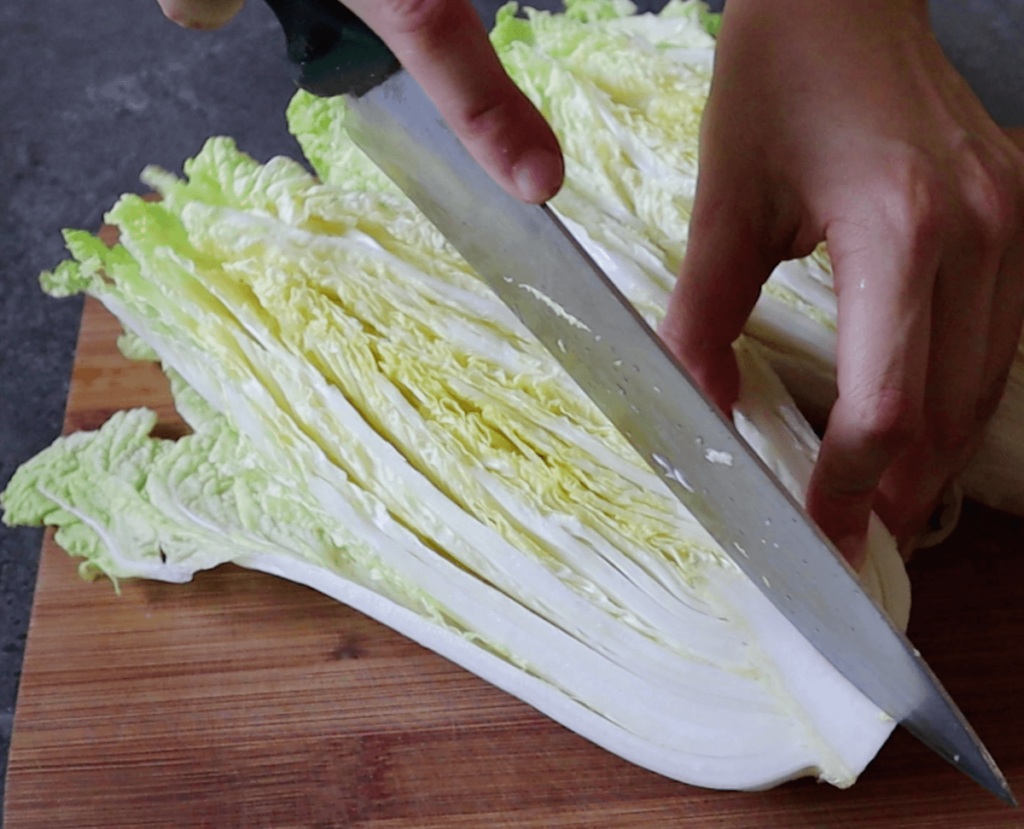
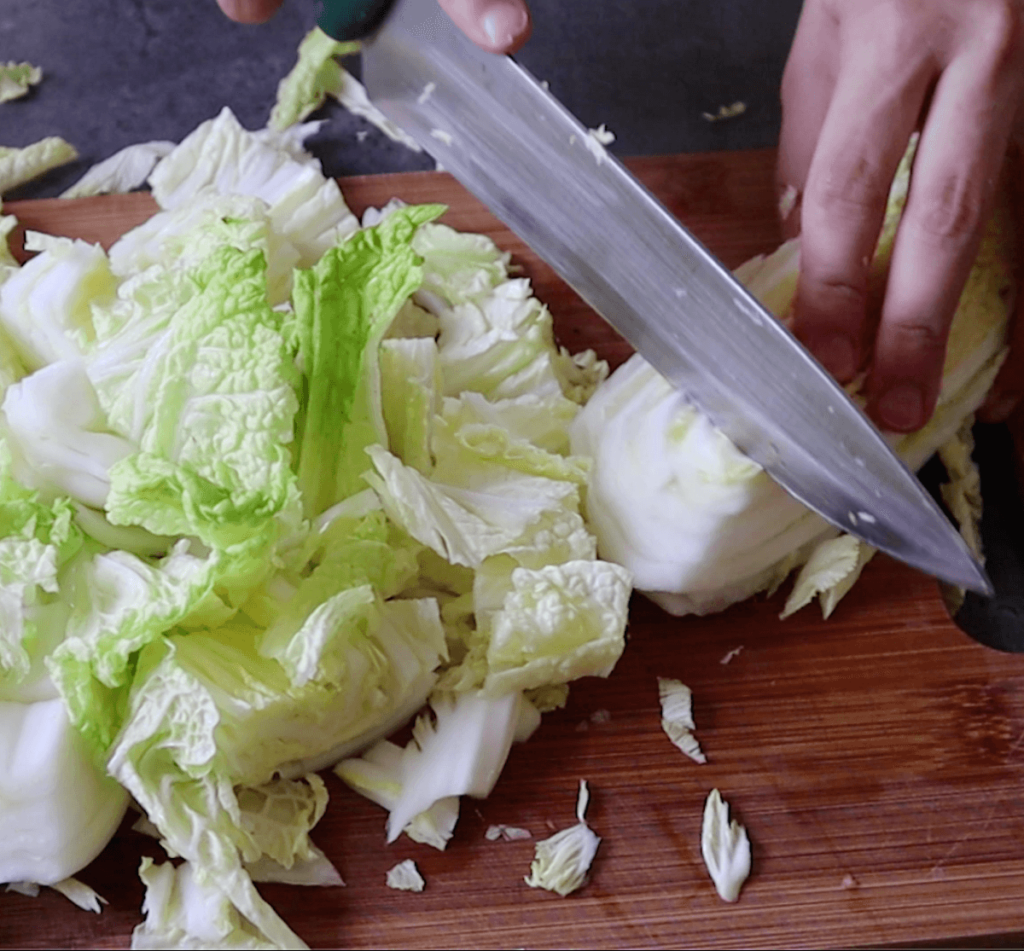
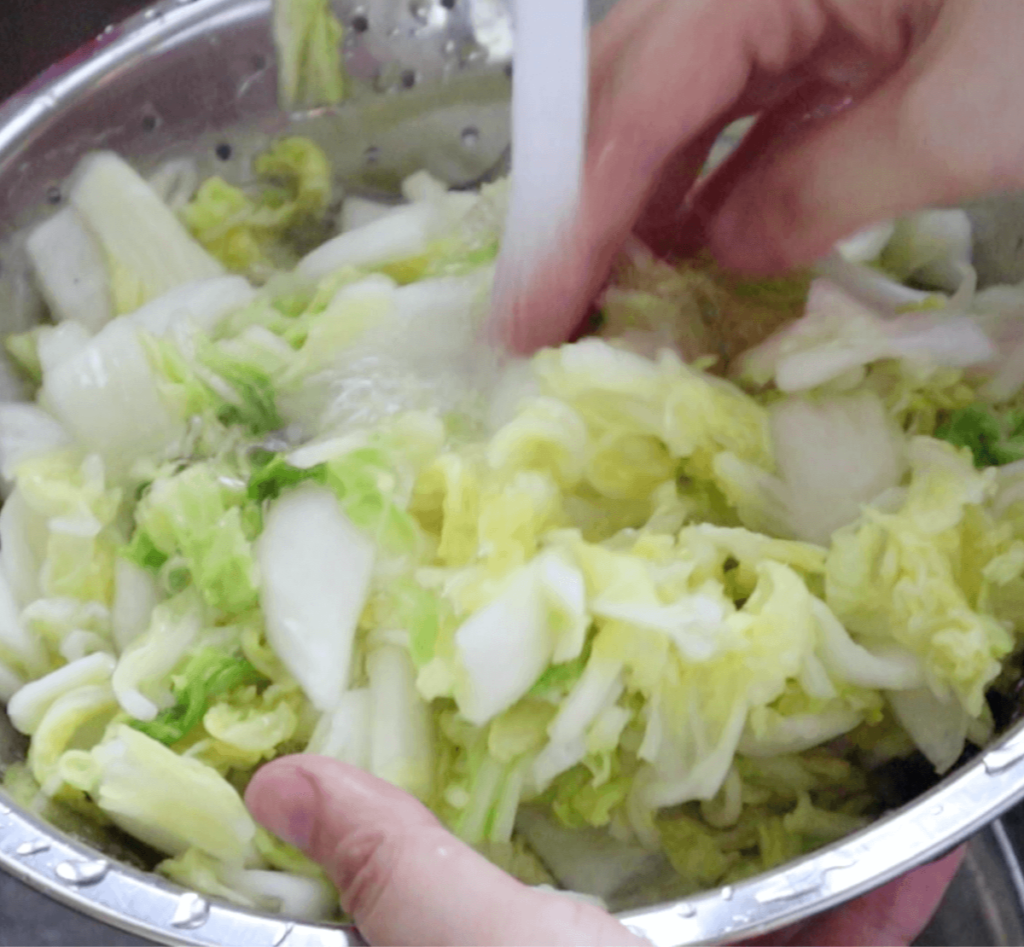
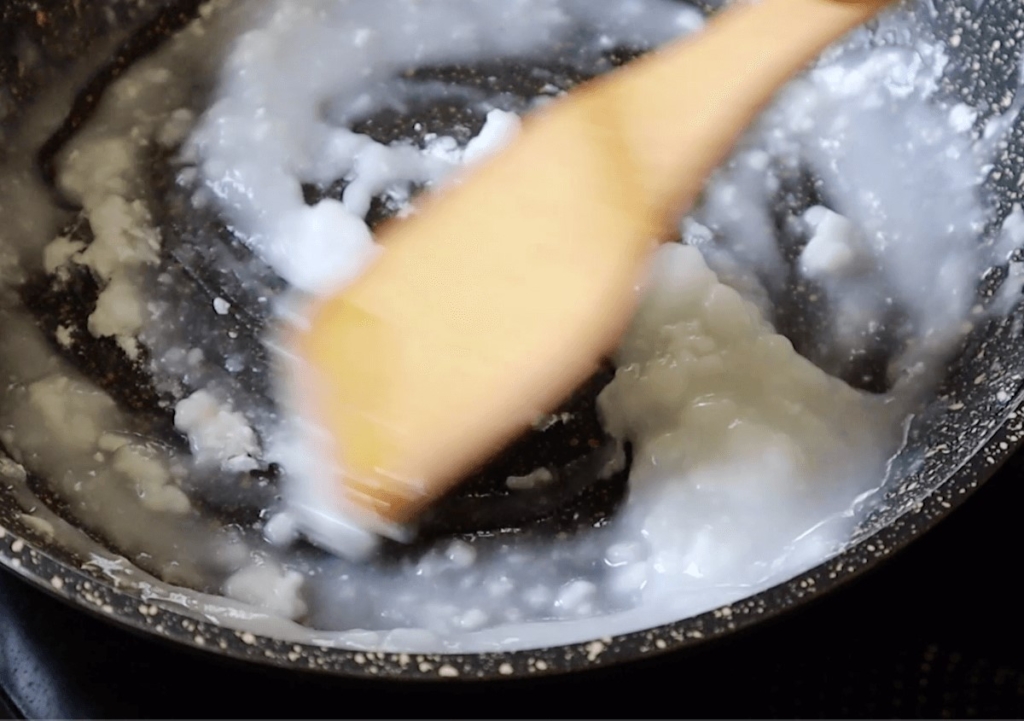
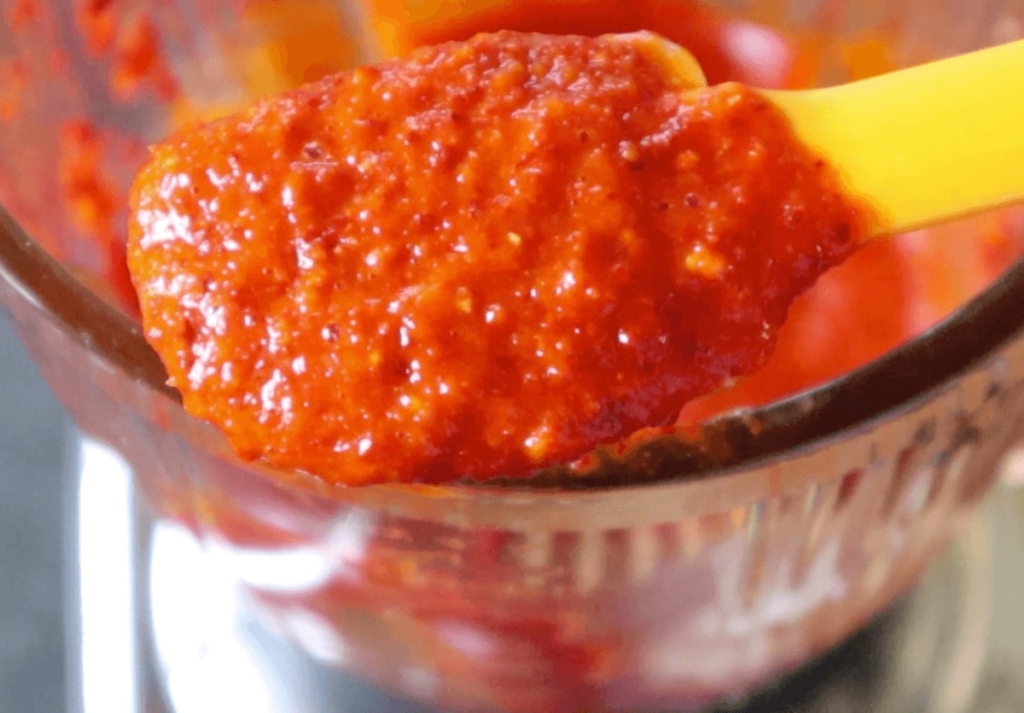
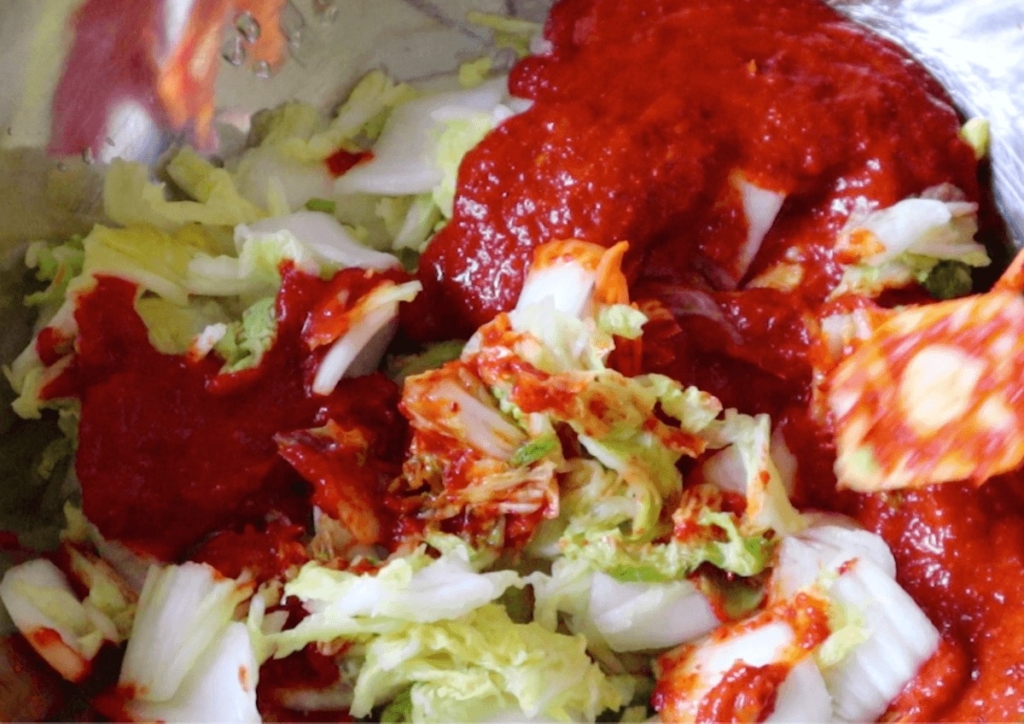
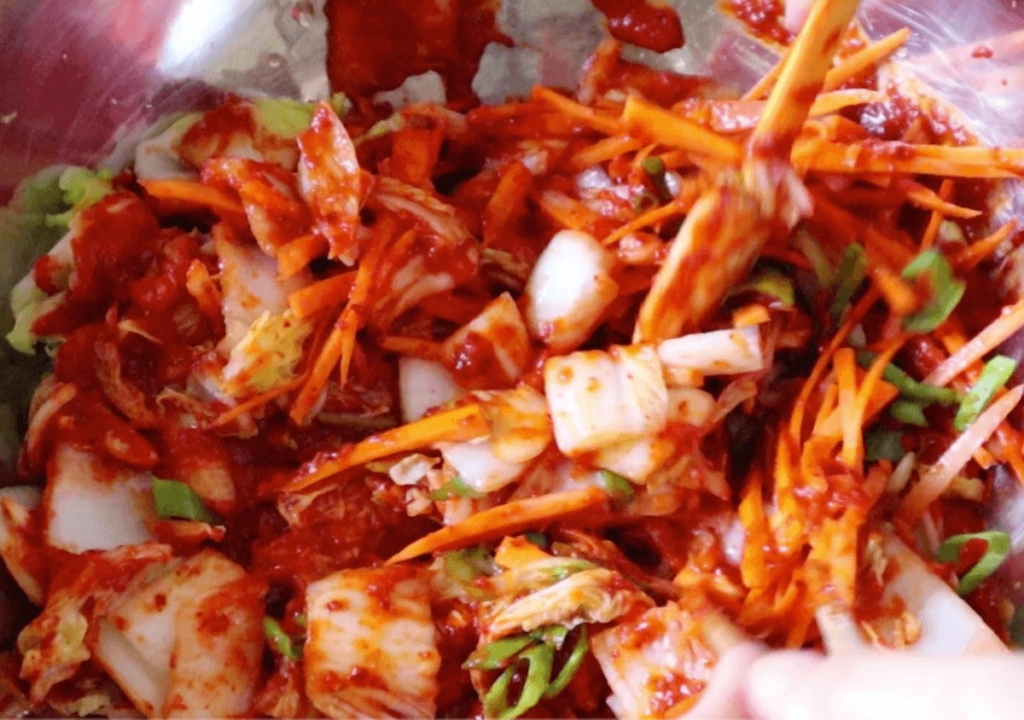
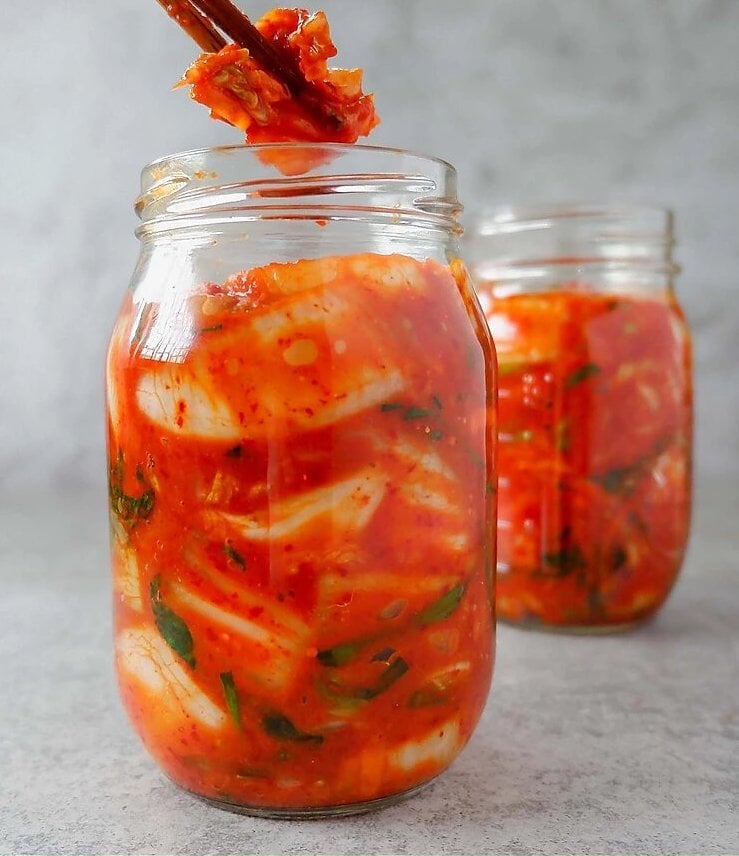







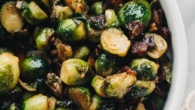



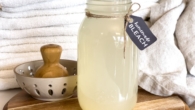


Leave a Reply
You must be logged in to post a comment.